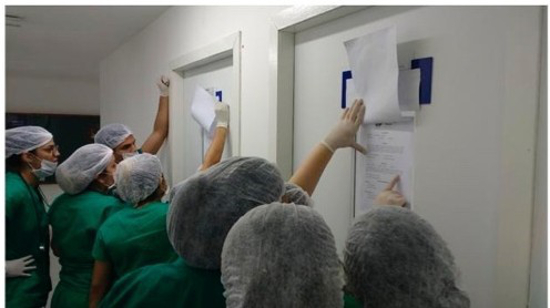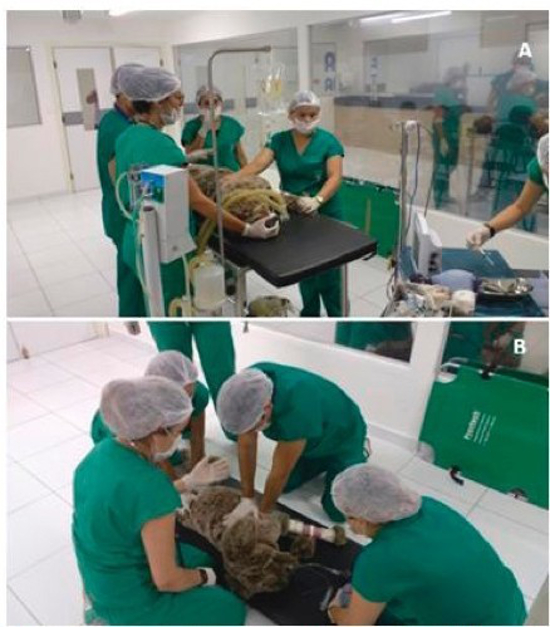Use of Advanced Simulation to Learning of Approach the Patient Critical or Canine Feline
R. de Souza Mendes1; R. Tenorio Padilha1; A.L. de Lima e Silva Araujo2; E. Lucena de Oliveira3; L. Tinoco Fonseca4; A. Catherine de Paiva4; J. Lucia Correia4; J. Brandao da Costa4
Introduction
The teaching based in simulation (TBS) has become an important training tool for health academics in the field of clinical practice.
Objectives
The aim of this study was to evaluate cognitive performance and practical skills of students of veterinary medicine, through comparative analysis of interactive lecture and advanced simulation of emergency care to the patient canine or feline.
Methods
The study was conducted on the premises of the Health School, Potiguar University, Natal, RN, Brazil. The students were randomly divided into 10 groups, consists of five students, which initially five groups were submitted to theoretical/interactive class (images and videos), and the other groups received skills training and scenarios following debriefing. The evaluation process took in three steps, through written test (10 objective questions and objective structured practical/clinical examination (OSPE and OSCE). The evaluation criteria were: Apply the basic rules on the reception of patients, emergency room and team preparation, state of readiness, realize the urgency of critical patient examining, patient classification - Short system, perception of cardiopulmonary arrest and perform maneuvers.
Cardiopulmonary-Cerebral Resuscitation
| Figure 1. Assessment station - OSCE/OSPE | 
|
|
| |
| Figure 2 | 
A - Advanced simulation training - Basic life support; B - Cardiopulmonary cerebral resuscitation. |
|
| |
Results
The applied statistical model (descriptive and correlation analysis), among the variables student performance on assessments and the methods employed, showed that the use of methodologies that reflect the practical applicability, such as simulation, favored the scope of the proposed learning objectives, allowing the implementation of the theoretical critical thinking, applied in an event of their professional reality.
Conclusions
The TBS provided an effective yield in the learning of emergency care in small animals.